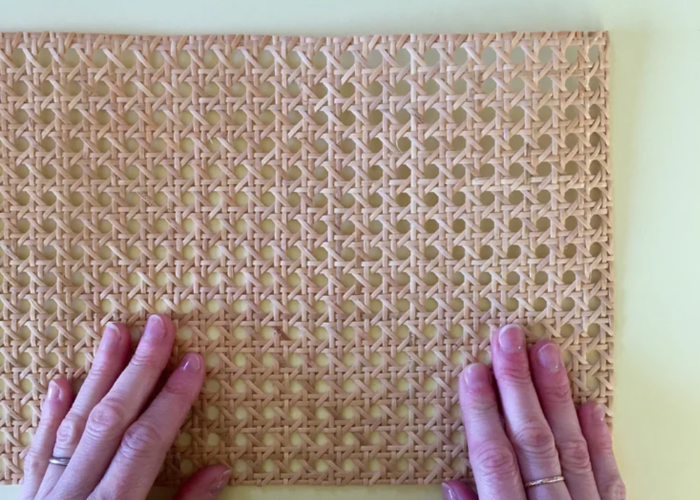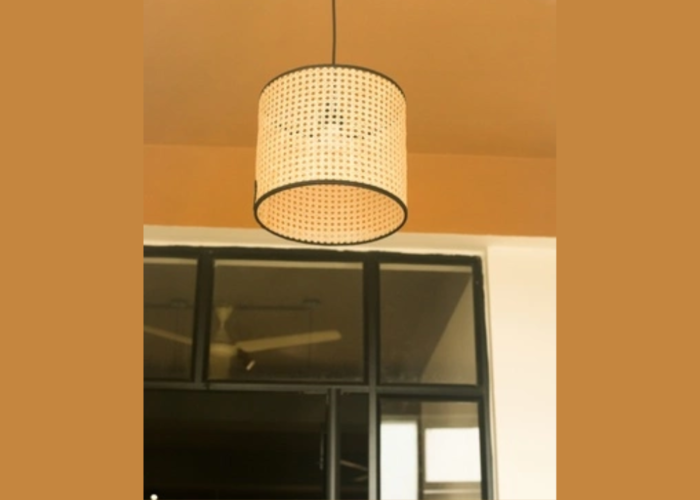Rattan is a natural, durable and beautiful material, widely used in many furniture and home decoration products. One of the most popular products is rattan lamp shade/ pendant light, which gives the space a cozy, friendly and intimate look. So how to make a rattan lamp shade diy?
In this article, we will guide you step by step how to make a simple but unique rattan lamp, with just some basic materials and tools.
1. How to make a rattan lamp shade?
Making a rattan lamp shade or rattan pendant light is a crafty and rewarding project. Here’s a step-by-step guide to help you make your own:
Materials Needed:
- Rattan/ cane webbing: You can find these materials at craft stores or online.
- Lampshade frame: Purchase a lampshade frame that fits your lamp.
- Measuring tape and ruler: For accurate measurements.
- Scissors or utility knife: To cut the rattan or cane webbing.
- Glue: Choose a strong adhesive suitable for bonding the rattan to the frame. Epoxy or a strong craft glue often works well.
- Binder clips or clothespins: These will help secure the rattan in place while the glue dries.
Step-by-Step Instructions:
Step 1. Measure and cut the rattan
Measure the height and circumference of the lampshade frame.
Cut the rattan or cane webbing strips to the appropriate length, leaving some excess to overlap.

Step 2. Apply glue and secure with clips
Apply a thin, even layer of glue onto the lampshade frame.
Press the rattan strips onto the glued sections, making sure they adhere securely.
Use binder clips or clothespins to hold the rattan in place while the glue dries. This ensures a tight bond.
Step 3: Continue adding rattan webbing
Repeat the process, working your way around the lampshade frame until it is completely covered. Overlap the rattan strips slightly for a seamless look.
Step 4: Trim excess rattan
Once the glue has dried, trim any excess rattan from the top and bottom edges for a clean finish.
Step 5: Optional finishing operations
Complete the frame boundaries of the lampshade.

Step 6. Let it dry and attach to lamp
Allow the lampshade to dry completely before attaching it to the lamp or hanging it.

2. FAQs
2.1 Are lamp shades hard to make?
Making lampshades can vary in difficulty depending on the complexity of the design and materials used.
Simple, basic lamp shades can be relatively easy to make, especially if you’re using pre-made frames and covering them with fabric or paper. On the other hand, more intricate or customized lamp shades, such as those involving weaving, intricate patterns, or specific materials like rattan, may require more skill and patience.
2.2 Are rattan lamps in style?
Yes, rattan lamps are considered stylish and have gained popularity in contemporary interior design. Rattan, a natural and versatile material, adds a touch of warmth, texture, and a hint of bohemian or tropical aesthetics to living spaces. Rattan lamps come in various styles, including pendant lights, table lamps, and floor lamps, making them suitable for different areas of the home.
The use of rattan in decor aligns with trends that emphasize natural materials and sustainable design. Rattan lamps often feature intricate weaving patterns, providing a unique and visually appealing look. Their neutral tones make them adaptable to various color schemes, and they can complement both modern and traditional interior styles.
2.3 How high should the bottom of the lampshade be off the surface?
A general rule is that the bottom of the lampshade should be positioned higher than the table surface by about 40-45 cm, allowing for even illumination without causing glare. However, if the lampshade is long or cone-shaped, you can adjust the height so that the bottom aligns with your eye level when seated.
This helps create a cozy and comfortable ambiance. It’s also important to choose a lamp with dimensions that suit your space and furniture to avoid visual clutter or imbalance.
2.4 Can you turn a basket into a lamp shade?
Yes, some baskets may be suitable for turning into lampshades because they have the appropriate width and height, as well as small holes for light to pass through. However, some other baskets may not be suitable because they are too small, too large, too deep, or too thick.
Additionally, the color of the basket also affects the lighting effect of the lamp. A basket with a light color will produce brighter light compared to a basket with a dark color. Therefore, to transform a basket into a lampshade, we need to choose a basket with the right size, shape, material, and color that aligns with our needs and style.
In conclusion, making your own rattan lampshade is a rewarding project that allows you to personalize your home decor. By following the above “how to make a rattan lamp shade” guide, you can create a unique and stylish lampshade that adds warmth and character to any space.
Illuminate your living space with a handmade masterpiece that reflects your craftsmanship and design flair, showcasing your DIY skills with a one-of-a-kind rattan lampshade.
If you have any further questions, don’t hesitate to send thanhcongcraft an email us at info@thanhcongcraft.com or message us at WhatsApp: +84967485411. Hope to serve you soon! Best regard!


